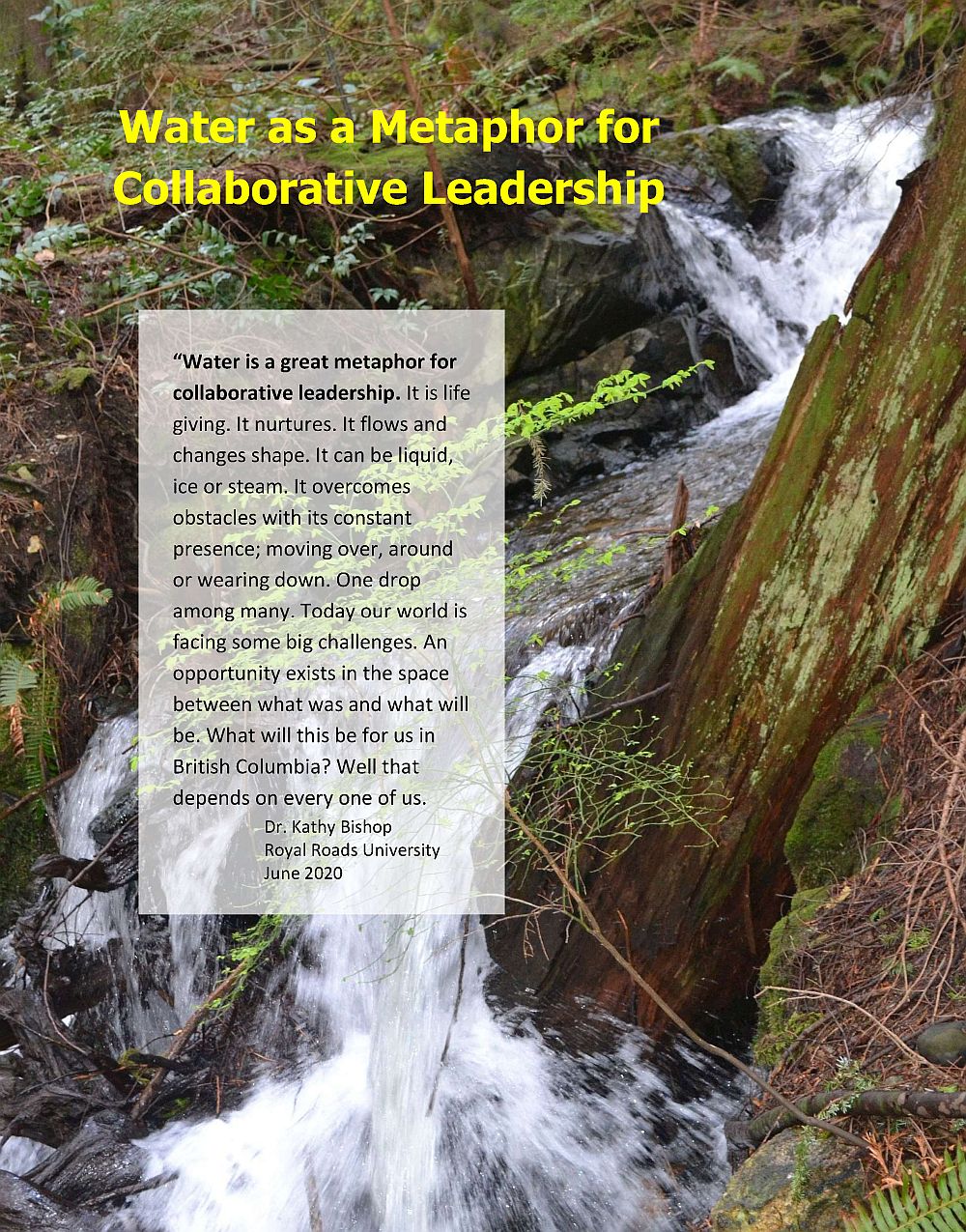CREATE SAFE CITIES FOR SALMON: “Inadequate statutory foundations and enforcement of current regulations have only hindered the implementation of nature-based solutions to protect salmon in cities. There must also be increased clarity and communication from the top to ensure these regulatory requirements are understood and effectively implemented,” stated Andrea McDonald, author of the joint research study by the Pacific Water Research Centre and the Salmon-Safe BC team (May 2021)
Note to Reader:
“SHARE INFORMATION. INFORM DECISIONS.” This soundbite lines up nicely with the mission of Waterbucket eNews which is to help our readers make sense of a complicated world. Waterbucket eNews celebrates the leadership of individuals and organizations who are guided by the vision for Living Water Smart in British Columbia to build greener communities and adapt to a changing climate; and embrace “design with nature” approaches to reconnect people, land, fish, and water in altered landscapes.
This edition shines the spotlight on research conducted by Andrea McDonald, a graduating student in the School of Resource and Environmental Management at Simon Fraser University. We do so because her findings highlight the importance of communication and understanding when it comes to the implementation of nature-based solutions to ameliorate the adverse impacts of urban development.
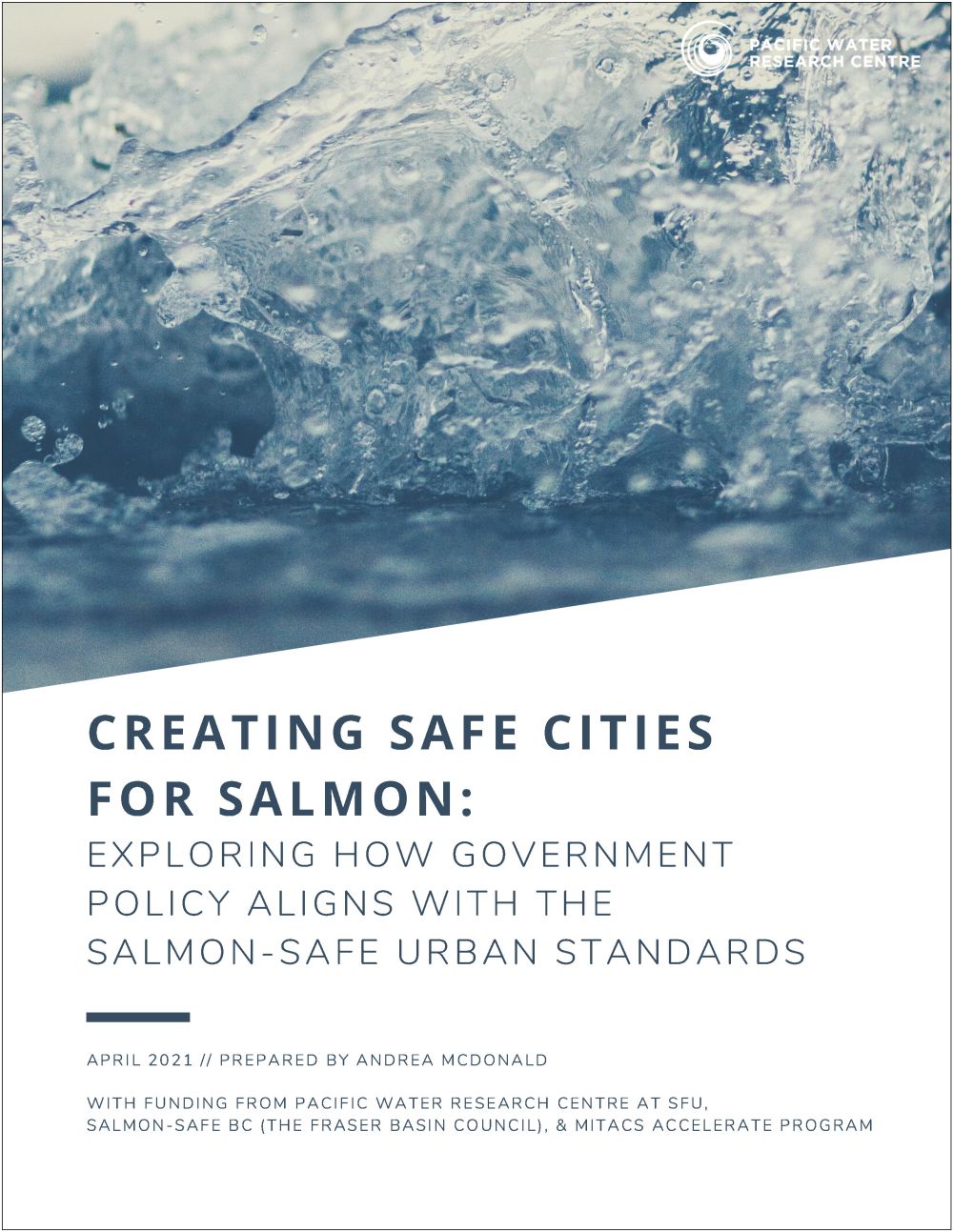

EDITOR’S PERSPECTIVE on Creating Safe Cities for Salmon
“At a moment in history when an attitude of “what’s in it for me, right now” is so prevalent, it is both refreshing to meet and a pleasure to feature prospective future leaders such as Andrea McDonald (this edition) and Nikki Kroetsch (last edition) in Waterbucket eNews,,” stated Kim Stephens, Waterbucket eNews Editor and Executive Director, Partnership for Water Sustainability in British Columbia.
 “Both see the world through the lens of intergenerational collaboration. Both aspire to make a difference through a career commitment. They care about and are motivated by the ‘greater good’ and, most significantly, are ready to work at it. This way of thinking contrasts with an ‘instant gratification’ mind-set.”
“Both see the world through the lens of intergenerational collaboration. Both aspire to make a difference through a career commitment. They care about and are motivated by the ‘greater good’ and, most significantly, are ready to work at it. This way of thinking contrasts with an ‘instant gratification’ mind-set.”
“Andrea and Nikki are emerging young talent. They give me hope for the future. And why is that, you the reader may wonder? Well, they are passionate and committed. In addition, both have focus and an appetite for learning: they embrace the idea of the intergenerational baton as a metaphor for passing on experience, knowledge and wisdom.”
“Through their post-graduate research, they have invested time and effort to pull threads of understanding from the past to the present. As they embark on their professional careers, Andrea McDonald and Nikki Kroetsch are positioned to build bridges of understanding that extend into the future.”
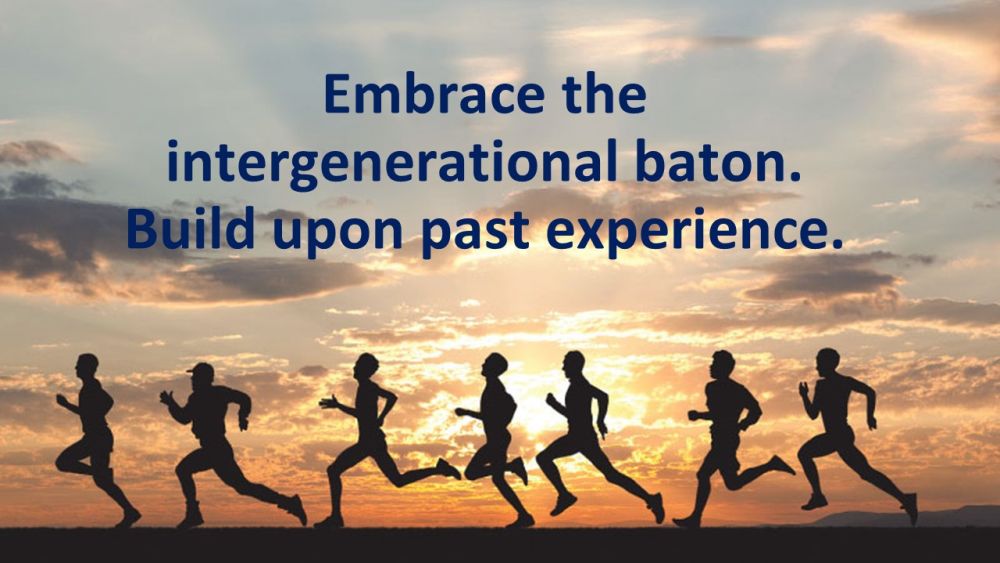
Be Inspired, Be Passionate, Be Committed
“Career commitment. That is the operative phrase. As a society, I believe that we have lost sight of why a career commitment is foundational to transforming an aspiration into an outcome, over time. It takes a career to acquire the experience and knowledge that results in wisdom. It also takes a career to truly become a subject matter expert. This foundation is unlikely to result from job-hopping,” continued Kim Stephens.
“Institutional memory depends on intergenerational transfer of knowledge and understanding, and this is what is being lost at an accelerating rate, especially in government. Andrea McDonald’s research findings brought this home to me, and in a visually powerful way, when she presented her findings to the Fraser Basin Council in December 2020. The presentation is posted on YouTube.”
“Creating Safe Cities for Salmon seems straightforward as a vision and a goal, right? But creating this outcome depends on bringing together a myriad of small pieces to create the big picture. This takes a career and, speaking from experience, it requires enduring commitment! So, I asked Andrea, what is your vision of how you will take what you have learned from your research and the people you have interviewed, and translate this information and understanding into a career?”
“I am inspired,” Andrea replied instantly. “I feel like I know the direction that I will take and that is local government. And I am passionate about having a career in local government because that is where I see the needed changes happening. It is where I see bringing my environmental perspective to both policy making and implementation.”
“Andrea’s story is compelling. She delved deeply to gain an appreciation for what matters regarding nature-based solutions for protection of salmon and their habitat. When I asked her about the top three takeaways from her research, she responded without hesitation. Andrea framed her observations in terms of Shared Responsibility and what this means in a local government context. I was impressed. Andrea gets it! Her observations are succinct and provide a mind-map for Creating Safe Cities for Salmon.”
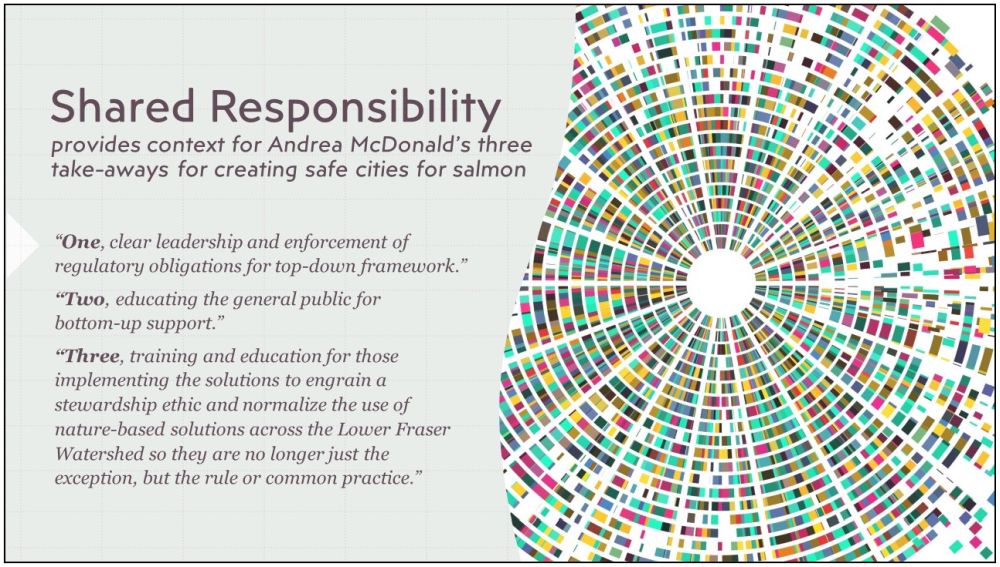
Creating Safe Cities for Salmon
“Rapid urbanization of the Lower Fraser Watershed (LFW) has dramatically altered the natural hydrology of the landscape. The building up of cities in the LFW has resulted in the reduction and degradation of valuable wild Pacific salmon habitat and waterways,” states Andrea McDonald, author of a joint research study by the Pacific Water Research Centre at Simon Fraser University and the Salmon-Safe BC team at the Fraser Basin Council.
To Learn More:
Download a copy of Creating Safe Cities for Salmon: Exploring How Government Policy Aligns with the Salmon-Safe Urban Standards
Focus on Nature-Based Solutions
“Declining water quality and loss of natural habitat due to urbanization only adds an additional layer of stress to the already vulnerable wild salmon populations of the LFW. Green infrastructure, or nature-based solutions, is a valuable tool used to ameliorate the adverse ecological impacts of urban development. Yet, implementation of these solutions across the LFW, in many case, is seen as the exception rather than the rule.”
“In carrying my research, I interviewed experts in the field and completed a policy analysis of urban development and salmon protection standards across the LFW. Using the scientifically derived standards from the Salmon-Safe Urban eco-certification as an evaluative framework for policy comparison, the study showcases the many efforts being made across the region to develop cities more sustainably with wild salmon populations in mind.
“However, my research also demonstrates how the implementation of these nature-based solutions to protect local salmon populations has been patchy, challenging, and lengthy due to inadequate statutory foundations and enforcement, lack of public support and understanding, and limited educational opportunities and training programs.”
Call for an All-of-Government Response
“Protection of salmon and their habitat from the adverse impacts of urban development is a challenging task that requires an all-of-government response. Findings from this research highlight the variable involvement and guidance provided from the higher levels of government in Canada. As one expert noted, the province must provide more clarity on direct regulatory obligations which have compliance initiatives in place to enforce them.”
“Inadequate statutory foundations and enforcement of current regulations have only hindered the implementation of nature-based solutions to protect salmon in cities. There must also be increased clarity and communication from the top to ensure these regulatory requirements are understood and effectively implemented.”
“Having a balance of top-down and bottom-up leadership can empower and educate lower-level governments to make decisions that support sustainable development and protect vulnerable salmon populations. Yet, even with the proper top-down statutory foundations, my research also identified the hesitations toward nature-based solutions that remain amongst local governments due to limited support and understanding from the public, developers, and other government staff.”

Download a copy of the PowerPoint presentation by Andrea McDonald, 2021
Reconnect People, Land, Fish and Water
“Public support is integral for the implementation of sustainable development solutions. Local stewards across the LFW have been essential in providing that bottom-up pressure necessary to push governments towards more sustainable development solutions. However, what happens when that bottom-up pressure from these dedicated parties does not exist? What if the community does not support or fully understand the cause?”
“My research highlights the barriers local governments face when communities are unfamiliar with the problem, and ultimately do not fully support the solution. Many cities in the LFW have eliminated or severely altered the original salmon-bearing stream networks across the watershed. Not having the visual connection and reminder of what impacts urbanization has on wild salmon, and local watersheds more broadly, has limited the public support for solutions.”
“With limited staff capacity and tight government budgets, it is important that the public is understanding and supportive of larger-scale initiatives, especially ones that have not historically been the norm. Providing opportunities for the public to be more engaged and educated on the subject can offer that bottom-up pressure necessary for more rapid-paced change in local governments.”

A New Form of Governance: Top-Down & Bottom-Up
“When I reflect on what I learned from my research, what stands out is the importance of having balanced pressures from both the top – by providing the necessary legislation, enforcement, and regulatory mechanisms – and the bottom, by providing the public support and pressure for change. Not only are educational opportunities important for the public to be supportive, these also help government staff and developers understand how a ‘design with nature’ approach works, and why it is important.”
“During the interviews, LFW experts and government staff emphasized the importance of having everyone on the same page. There needs to be efforts more broadly that can normalize the use of nature-based solutions to ensure it is common practice. If developers are unfamiliar with these systems, and if they are given a choice, they may default to a more familiar traditional grey infrastructure approach.”

Build Understanding Across Generations
“We need to make sure that understanding of these principles and the adverse impacts of past practices are being passed on intergenerationally. There needs to be a stewardship ethic that is engrained in all parties involved in the decision-making and implementation process.”
“Creating safer cities for salmon requires strong and clear statutory foundations and enforcement. However, the top-down governance approach can only go so far. Garnering support from the public, government staff and council, and those implementing and enforcing the solutions is essential.”
“Educational opportunities should be increased to boost the public’s understanding of the problem and why a ‘design with nature’ approach is more sustainable; this will provide that necessary bottom-up support needed.”
“Last, educational programs and training should extend beyond the public to developers and government staff. Having support for these systems and principles is important, but it is equally as important to ensure those implementing and enforcing them are knowledgeable and understanding,” conclude Andrea McDonald.

About the Partnership for Water Sustainability in BC
Incorporation of the Partnership for Water Sustainability in British Columbia as a not-for-profit society on November 19, 2010 was a milestone moment. Incorporation signified a bold leap forward. The Partnership evolved from a technical committee in the 1990s, to a “water roundtable” in the first decade of the 2000s, and then to a legal entity. The Partnership has its roots in government – local, provincial, federal.
The umbrella for Partnership initiatives and programs is the Water Sustainability Action Plan for British Columbia. In turn, the Action Plan is nested within Living Water Smart, British Columbia’s Water Plan. Released in 2008, Living Water Smart was the provincial government’s call to action, and to this day transcends governments.
Conceptual Framework for Inter-Generational Collaboration
Technical knowledge alone is not enough to resolve water challenges facing BC. Making things happen in the real world requires an appreciation and understanding of human behaviour, combined with a knowledge of how decisions are made. It takes a career to figure this out.
The Partnership has a primary goal, to build bridges of understanding and pass the baton from the past to the present and future. To achieve the goal, the Partnership is growing a network in the local government setting. This network embraces collaborative leadership and inter-generational collaboration.
Application of Experience, Knowledge and Wisdom
The Partnership believes that when each generation is receptive to accepting the inter-generational baton and embracing the wisdom that goes with it, the decisions of successive generations will benefit from and build upon the experience of those who went before them.
The Partnership leadership team brings experience, knowledge, and wisdom – a forceful combination to help collaborators reach their vision, mission, and goals for achieving water sustainability. When they are successful, the Partnership is successful.
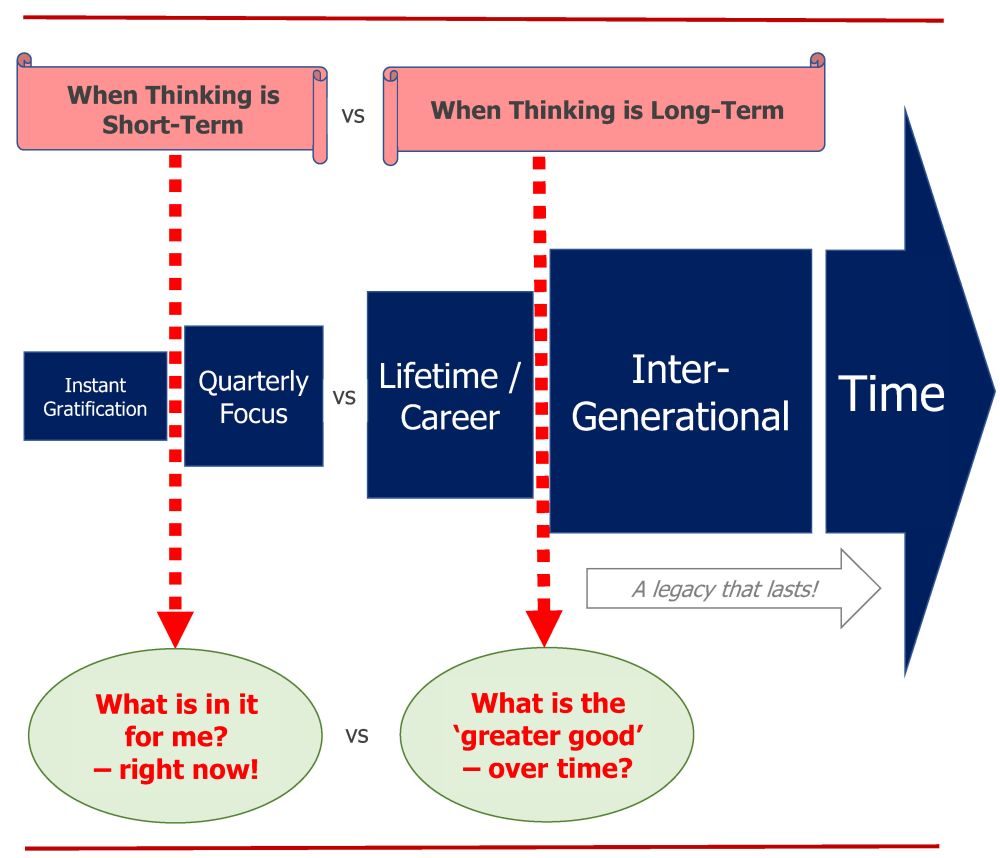
The Time Continuum graphic (above) conceptualizes the way of thinking that underpins the inter-generational mission of the Partnership for Water Sustainability. Influence choices. Capitalize on the REACHABLE and TEACHABLE MOMENTS to influence choices.
TO LEARN MORE, VISIT: https://waterbucket.ca/about-us/
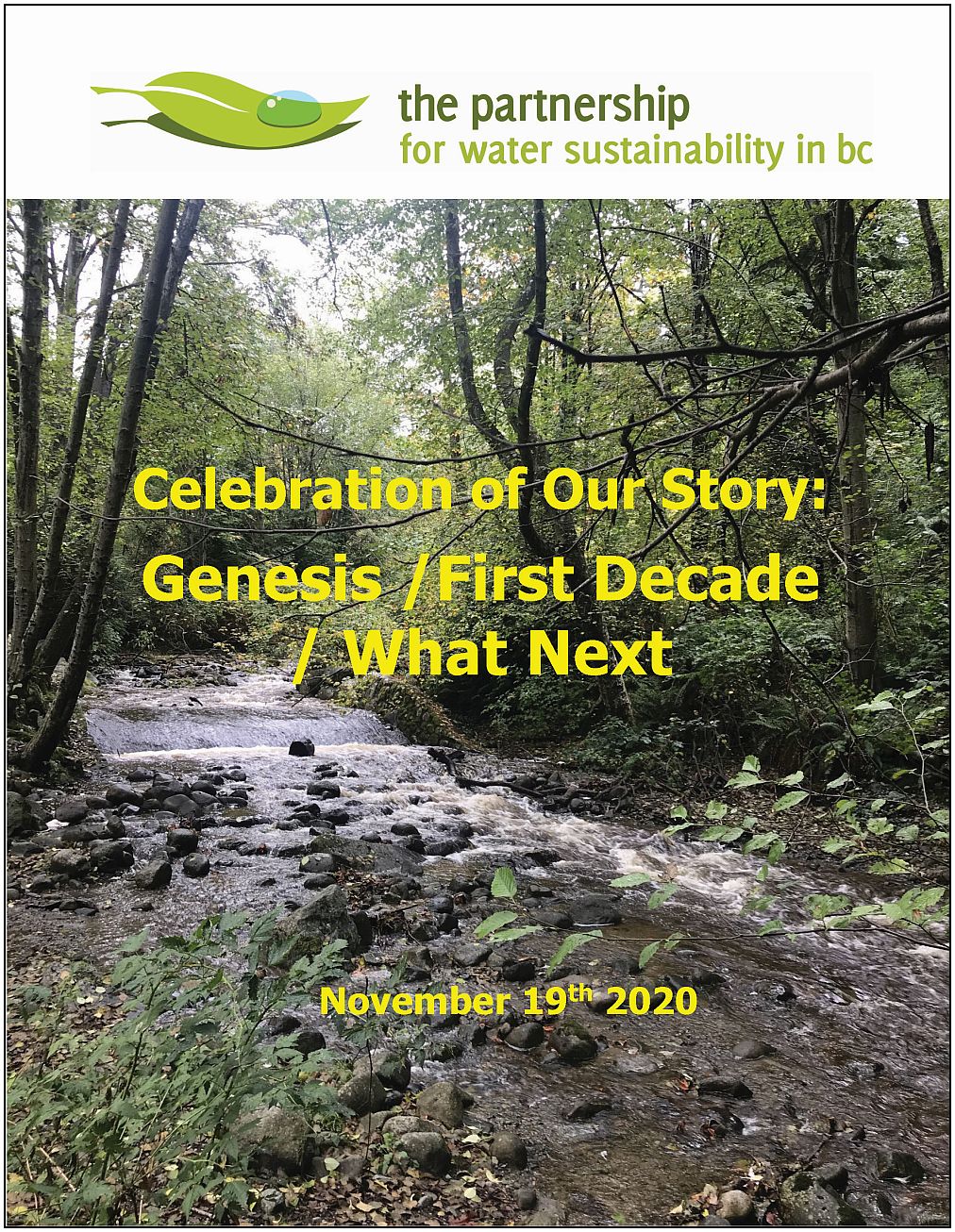
DOWNLOAD: https://waterbucket.ca/atp/wp-content/uploads/sites/9/2020/11/PWSBC_Story-of-First-Decade_Nov-2020.pdf


